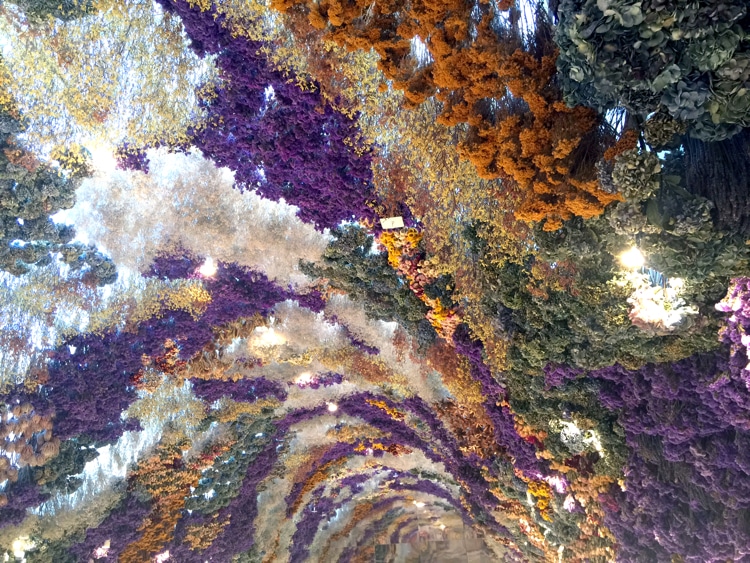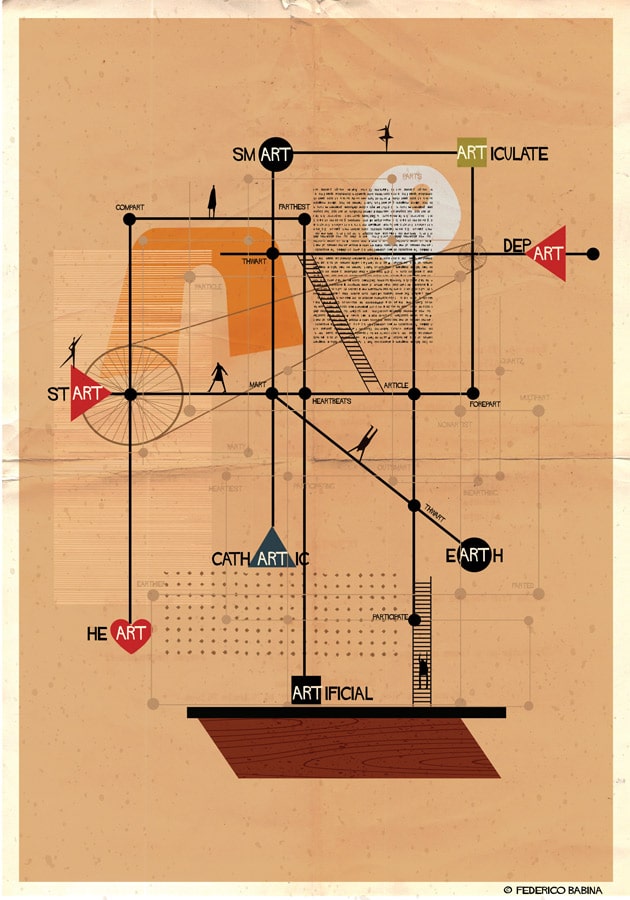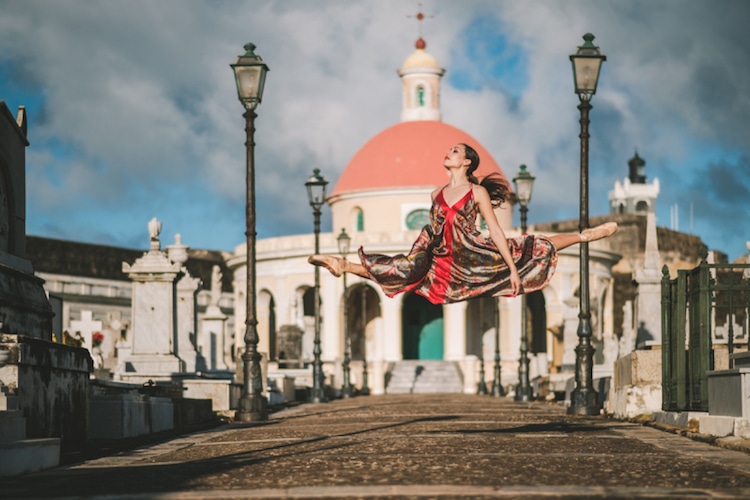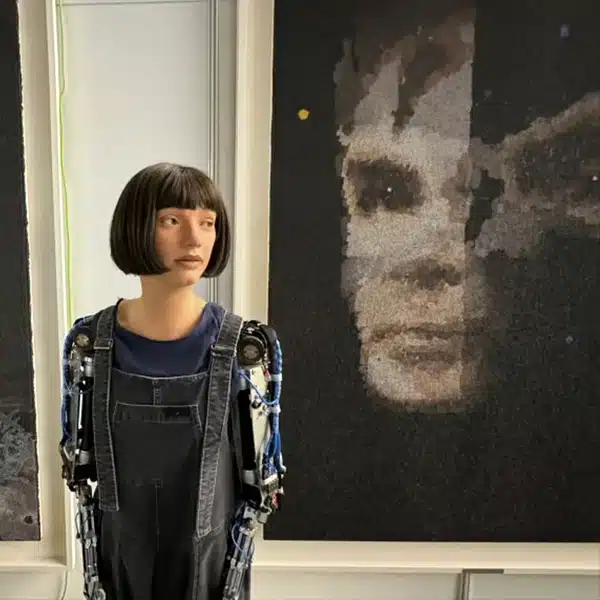
Clockwise, from upper right: Rone, Loreal Prystaj, Miguel Chevalier, Sigalit Landau.
What does it take to make a great piece of art? This seemingly simple, yet deeply complex, question has been debated throughout the history of art. Who decides what is “good” art and what is “bad” art? While many look to art critics and curators for answers, we decided to turn to a wide variety of contemporary artists, going directly to the source.
From illustrators to paper artists, photographers to installation artists, just what do the creative minds behind today's most stimulating contemporary art feel is the key to great art? For many, it's subjective and can encompass a range of characteristics, but as we surveyed the artists there were overarching themes. Innovation, emotional connectivity, and a bit of luck were repeatedly mentioned no matter the medium.
The eternal quest for great art of course changes over time, ebbing and flowing with tastes and trends. So, let's take a look at how these 21st-century artists respond when posed with this challenging question.
We asked 12 contemporary artists “What does it take to make a great piece of art?” Here's what they said…
Li Hongbo
When I first started practicing art, our professors would make us draw the busts of widely renowned sculptures. The busts became patient friends and mentors of mine. To this day I will remember the time I spent sketching them. To breathe new life and revitalize old memories, I have recreated these tools of study using my own mode of expression—paper.
My artistic creation has lots of themes. However, they are all close to my thinking, my experience, and my life now. Those themes, which have been expressed, are the material, which comes from my inner thinking. When people look at a box, they think “It's a box.” But, actually, it can change into another thing. I want to change the image, change how people see things so they think in another way, and more deeply.
There is a Chinese saying, “life is as fragile as paper,” which has left a deep impact on me. The concise and harrowing phrase sums up the fragility of life and rockiness of fate. Life is as pure as a piece of white paper when it is born. Yet, it is as fleeting as a galloping white horse against infinite time, as it is fragile and solitary against the volatile world. Life is vulnerable and transient; it is as fragile as paper.
Maybe I am like paper: pure at birth, silent in death, and blossoming like flowers even in my withered bones.

Rebecca Louise Law. READ MORE: Giant Installation of 150,000 Native Australian Blooms Displays the Power of Flowers
Rebecca Louise Law
Patience, courage, humility and hard work. I have found that focusing ahead is much more beneficial to my art practice than looking at the present. Living in the moment can be distracting and often hinder the creative process. The best work always comes from being challenged, whether in time, finances, materials or concept. It’s better to take risks than play safe.

Federico Babina. READ MORE: Powerful Architectural Illustrations Visually Interpret Mental Illnesses
Federico Babina
In everything, there is a bit of ART. There is, you have just to discover how to see it. It is often hidden, fragmented, disorganized, and unassuming. The challenge is to discover it, compose it, and order it. We should observe things from a different point of view. Looking at the world upside down can offer many creative ideas and awaken from a kind of “sleep of vision.”
There is no universal formula to create a piece of art. Everyone has to find their own path. Your traveling companions on this journey through these sensitive places are “fARTasy,” “creARTivity,” and “invARTiveness.” It is like composing a song or a melody. The notes already exist and they are seven. The hardest part is putting them together and finding a proper balance between the music and the silence, between harmony and melody.
Matt Shlian
This feels like a trick question. It can be interpreted as what (tools, materials, process) does it take to make a great piece of art? Or it can be read as what makes a piece of art great? Both are big questions.
Let me start with what makes a piece great:
A piece of art needs to connect. It needs to have some element of truth to it that resonates with the viewer and leaves them something after they’ve left the piece. A good piece asks questions and teaches you something you didn’t know or shows you something you didn’t know you knew. It articulates something we’ve felt, and we connect to that thing in a way where words aren’t necessary. It's a feeling that's hard to describe but makes us feel less alone in a way—that someone else understands us and gives a voice to this thing inside us. A piece of art extends beyond its frame and becomes part of us.
I've made work for almost 20 years and I’m made a ton of work in that time. Some are ok, most “meh,” and a handful of good ones. The ok ones lead to the next pieces (and are a necessary part of the process) and the good ones sometimes come all at once and sometimes you have to grind them out slowly for a number of years to get one. It's equal parts mining for gold and standing in a field trying to get stuck by lighting. Some days you dig and other days you look up and wait.
This leads back to the first question—What does it take to make a great piece?
It takes time, sometimes a shovel and sometimes it takes being in the right place at the right time.

Rone. READ MORE: Street Artist Creates Crumbling Portraits on Abandoned Buildings to Reveal the Fragility of Beauty
Rone
I think what it takes to make a great piece of art is to connect with the observer on an emotional or personal level. A bit of mystery can let the observer interpret the work based on their own experiences and let them identify with it. If you spell it all out there can only be one way to interpret the work, and I think what makes great art is when everyone experiences it differently.

Miguel Chevalier. READ MORE: Projection Mapping on King's College Chapel Blends 16th-Century Gothic Architecture with Contemporary Art
Miguel Chevalier
In my case, I understood in the early 1980s that computer tools were going to be the basis for a structurally original approach, whose stakes had to be grasped right away. These possibilities seemed unlimited and the transformations unending. They represented a fabulous dictionary of forms and colors, on whose basis I could work on the image, modify it, and regenerate it.
Digital art can explore new territory. I believe that is really a new kind of aesthetic of the virtual that is emerging. I have the feeling of being in tune with my time, creating a new poetry and a new poetic universe able to lift emotions. It is for me the art of the 21st century.

Sigalit Landau. READ MORE: Dress Submerged in Dead Sea Transforms Into Glimmering Salt-Covered Masterpiece
Sigalit Landau
To make a great piece of art you need to believe that you have an eternity of time—even though it is the most urgent thing in your life—and you also need plenty of nothing-to-lose, for its impeccable production. To consume a lot of music, love, and a little alcohol, of course.
Omar Z. Robles
It takes a larger combination of elements to create one great work of art, but ultimately the question should become “What does it take to make a great PIECES of art?” (Note the plural). Why? Because in order for an artist to truly excel they need to be able to create not one, but many great pieces of art. That’s how you can recognize, or rather distinguish, the artist from the layman. It’s the consistency in their work that separates them from just being a “one hit wonder”.
Now in order to achieve that, you need to be able to have the patience of going through the process of getting it wrong, many times. Until you start getting it right, then you continue pushing yourself on that same line and you don’t quit. Another element is to be self-critical. One of my mentors in photography once told me “the true secret to great photographers is that they only exhibit their best work.” We all can produce a bad piece, even on our best days. However, you have to learn to detach yourself from your work and be critical of yourself before you publish any kind of work.
Finally, it takes essence/context for a work to be great. That is, I guess, the hardest thing to assess. Great works of art, I believe, all share one thing, and that is that they are supported by context. It can’t just be beautiful, or shocking for the sake of it. Great artworks captivate you because you can, in one way or another, identify with it. Marcel Marceau used to tell me all the time “il fault toucher le publique” (we need to be able to move the audience). His message was, it’s not enough to be technically good, you need to have the capability to move and touch your audience. The only way you can move your audience is if your work is supported by context.
Charles Pètillon
Great authors, philosophers, or critics have published books about this subject without being able to answer the question, so I do not see how I can try to answer it….. The look on a work is multiple. There is an emotional and philosophical charge, the relation to space, the subject, the light, the relation to the spectator, the technique, the message, the concept etc ……
Lauren Brevner
Every time I see work from another artist that I love, I tend to have a visceral reaction to the piece(s). It could be a quickening of my pulse, or butterflies in my stomach, that strange twisty feeling you get in your gut that's so similar to the reaction you would have when lusting over someone. That's how I know it's good. I can't stop smiling, or staring; it brings me such a rush of emotion that I can't help but feel drawn to it. I believe it comes down to a purity of the artist's voice that you really can't fake.
When making my own work, I know I've done my job when I get that feeling, that twinge of excitement (of course that doesn't always happen, unfortunately) but I know I've done my best when I have those feelings.

Philippe Echaroux. READ MORE: Powerful Series Projects Faces of Indigenous People Onto the Amazon Rainforest.
Philippe Echaroux
An emotion. This is the first spark of every fire. Emotions that are not necessarily positive ones, but this first feeling creates the art. If you try to express what you are feeling that will be art no matter which way it takes and what form it has.
Loreal Prystaj
As an artist, it is important to create work that genuinely comes from within. This is the only way that a new and unique point of view is found. It is an easy trap for an artist to generate work she perceives her audience will like. True, the viewer ultimately determines the greatness of an art piece—great art impacts a vast spectrum of people. But a volatile audience cannot be predicted, hence great art is rarely a calculated guess, it is often an accident. The only way an artist can introduce new perspectives is continuing to be curious, ask questions, and explore. Seeing the world through curious eyes leads to new discoveries.




























































































